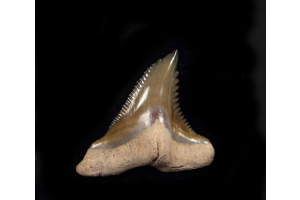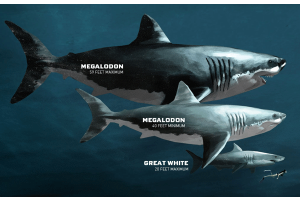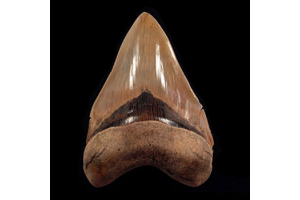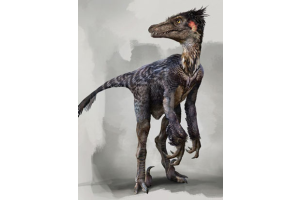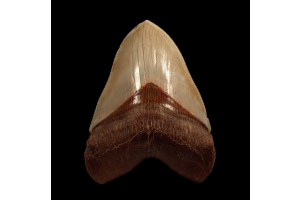Monthly Archives: June 2025
- - June 13, 2025
There’s something profoundly thrilling about holding a fossil that dates back millions of years. For researchers and collectors alike, this tangible link to the ancient oceans offers more than just scientific insight—it provides a visceral connection to our planet’s deep past. At Buried Treasure Fossils, we share this passion, offering access to some of the world’s most fascinating specimens, including rare shark teeth and the elusive black shark tooth, all within reach for those who seek the best.
Why Rare Shark Teeth Matter to Science and Collections
The fossil record of sharks is vast but fragmented. Since sharks are cartilaginous and their skeletons rarely fossilize, their teeth are often the only surviving evidence of their existence. This makes rare shark teeth a cornerstone for paleontological research and a prized asset for collectors. For scientists, each rare find offers a chance to better understand prehistoric marine life—how these apex predators evolved, migrated, and
- - June 10, 2025
Crabeater seal teeth are an exceptional choice if you’re fascinated by prehistoric life and looking to add a unique piece to your collection. These fascinating fossils, from the Antarctic waters, provide a glimpse into the past and showcase the incredible diversity of marine life from millions of years ago. Whether you’re a seasoned fossil collector or just starting out, you’ll appreciate the quality and authenticity of the specimens available. Explore our collection of crabeater seal teeth for sale at Buried Treasure Fossils and own a piece of history!
Why Crabeater Seal Teeth Are a Collector’s Dream
Crabeater seals are intriguing not only because of their name but also because of their place in the prehistoric ecosystem. Their teeth are unique and fascinating to study, making them highly sought after among collectors. These seals are found in the Southern Ocean, and their fossilized teeth offer a rare opportunity to learn more about marine mammals from the Miocene and Pliocene epochs.
- - June 08, 2025
Few Ice Age relics inspire awe like a genuine mastodon tooth. These ancient remnants are not only windows into prehistoric life but also prized treasures for collectors, historians, and natural science enthusiasts alike. From the towering woodlands of North America to the silty riverbeds of the Midwest, mastodon fossils continue to emerge, frozen in time and remarkably preserved.
Identifying a real mastodon tooth takes more than a casual glance. It demands a trained eye, curiosity, and reverence for a creature that walked the earth over 10,000 years ago. Mastodons, distant relatives of today’s elephants, had unique dental structures adapted to chewing coarse vegetation. Their teeth were built for cutting, not grinding, which makes their molars some of the most recognizable among prehistoric mammals.
Understanding what to look for is crucial—real mastodon teeth have distinctive high crowns and ridged enamel surfaces that show extensive wear patterns. These aren’t just rocks in disguise;
- - June 06, 2025
From the murky estuaries to freshwater rivers and coastal seas, the bull shark has long been a subject of fascination for marine biologists and fossil enthusiasts alike. As interest in prehistoric marine life intensifies, researchers are increasingly looking to the fossilized bull shark tooth for answers. This iconic specimen, along with every discovered bull shark tooth fossil, offers an invaluable glimpse into the evolutionary journey of one of the ocean's most resilient predators.
The Bull Shark’s Legacy in the Fossil Record
Carcharhinus leucas, better known as the bull shark, is a fascinating species that stands out from the crowd. What makes this shark truly remarkable is its rare ability to flourish in both saltwater and freshwater environments, which has intrigued researchers for years. This adaptability raises many questions about its evolutionary journey. However, it's the shark's fossil record—especially its teeth—that is starting to unveil secrets about its ancient behaviors,
- - June 02, 2025
Ever wondered what it would be like to hold a piece of ancient ocean history in your hand? That’s precisely what Angustidens' shark teeth offer. These fossils belong to one of the most fascinating prehistoric sharks—Otodus angustidens—a powerful predator that lived over 28 million years ago. With their sharp serrations, unique side cusps, and striking colors, these teeth are collector favorites and incredible windows into Earth’s distant past. If you’re hunting for something rare, authentic, and full of prehistoric charm, you’ll love exploring Angustidens shark tooth fossils.
Meet the Prehistoric Predator
Long before the infamous Megalodon, the seas were ruled by Otodus angustidens. This shark lived around 28 to 32 million years ago and was one of the ocean’s top predators. Its teeth are unmistakable—large, triangular, lined with sharp serrations, and distinctive side cusps that set them apart. These features weren’t just for show—they helped slice through prey with deadly efficiency.
- - May 31, 2025
For centuries, fossils have captivated the curious and the scholarly alike. But in recent years, a new audience has emerged—private collectors, interior designers, and natural history enthusiasts looking to bring authentic prehistoric artifacts into their homes. Among the most sought-after specimens is the velociraptor claw: a symbol of raw power, evolutionary prowess, and cinematic fame. The mystique surrounding these raptor relics makes them the crown jewel of any fossil collection.
If you've ever stood in awe before a fossil display at a museum and thought, "I want something like that at home," you're not alone. Today, owning a genuine piece of the Cretaceous period is not only possible—it’s surprisingly accessible. Whether you're a seasoned collector or an amateur paleontology buff, finding a velociraptor claw for sale that is both authentic and legally sourced is a thrilling quest. If you want to own a real and tangible velociraptor claw—not just a replica—this guide is your



